Fiat Panda vs Hyundai i20 - Differences and prices compared
Compare performance (70 HP vs 90 HP), boot space and price (14100 £ vs 18600 £) at a glance. Find out which car is the better choice for you – Fiat Panda or Hyundai i20?
Costs and Efficiency:
When it comes to price and running costs, the biggest differences usually appear. This is often where you see which car fits your budget better in the long run.
Fiat Panda has a evident advantage in terms of price – it starts at 14100 £, while the Hyundai i20 costs 18600 £. That’s a price difference of around 4466 £.
Fuel consumption also shows a difference: Fiat Panda manages with 5 L and is therefore slightly more efficient than the Hyundai i20 with 5.70 L. The difference is about 0.70 L per 100 km.
Engine and Performance:
Under the bonnet, it becomes clear which model is tuned for sportiness and which one takes the lead when you hit the accelerator.
When it comes to engine power, the Hyundai i20 has a clearly perceptible edge – offering 90 HP compared to 70 HP. That’s roughly 20 HP more horsepower.
In acceleration from 0 to 100 km/h, the Hyundai i20 is clearly perceptible quicker – completing the sprint in 11.50 s, while the Fiat Panda takes 13.90 s. That’s about 2.40 s faster.
There’s also a difference in torque: Hyundai i20 pulls convincingly stronger with 172 Nm compared to 92 Nm. That’s about 80 Nm difference.
Space and Everyday Use:
Beyond pure performance, interior space and usability matter most in daily life. This is where you see which car is more practical and versatile.
Seats: Hyundai i20 offers slightly more seating capacity – 5 vs 4.
In curb weight, Fiat Panda is minimal lighter – 1055 kg compared to 1145 kg. The difference is around 90 kg.
In terms of boot space, the Hyundai i20 offers evident more room – 352 L compared to 225 L. That’s a difference of about 127 L.
When it comes to payload, Hyundai i20 distinct takes the win – 465 kg compared to 365 kg. That’s a difference of about 100 kg.
Who wins the race?
The Hyundai i20 proves to be wins the duel decisively and therefore becomes our DriveDuel Champion!
Hyundai i20 is the better all-rounder in this comparison.
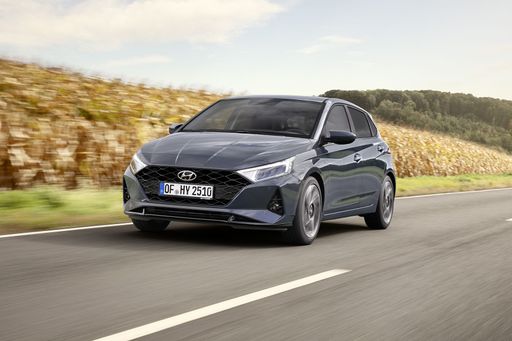
Hyundai i20
Costs and Consumption
View detailed analysis
Engine and Performance
View detailed analysis
Dimensions and Body
View detailed analysis
Fiat Panda
The Panda is a charming, no-nonsense city companion that mixes cheerful Italian flair with genuinely useful practicality, making tight streets and daily errands feel less of a chore. Its honest simplicity, clever packaging and a dash of cheeky character make it a smart, low-stress buy for people who prefer sensible perks over showroom flash.
details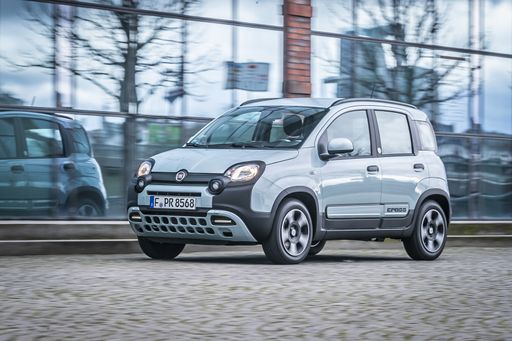
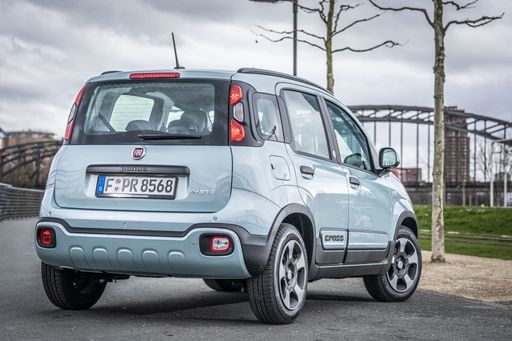
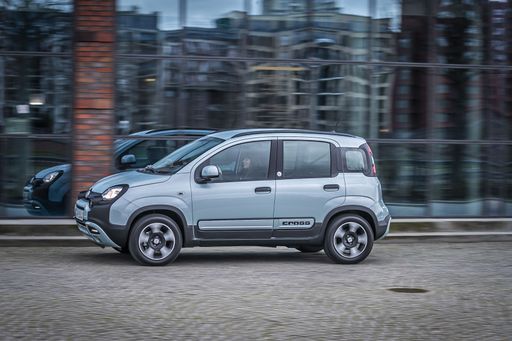
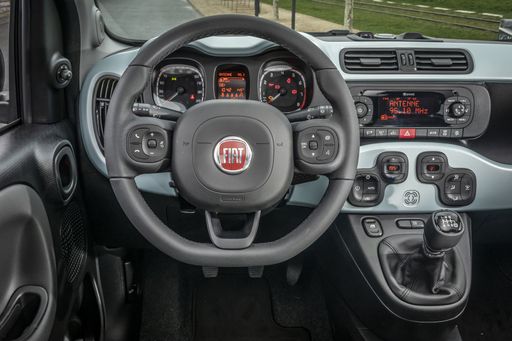
Hyundai i20
The Hyundai i20 is a cheeky small car that mixes smart styling with sensible practicality, feeling more polished and roomy than you might expect for the money. It’s an easy car to live with, offering engaging handling, a comfy cabin and useful equipment that make daily commutes and weekend errands notably less dull.
details
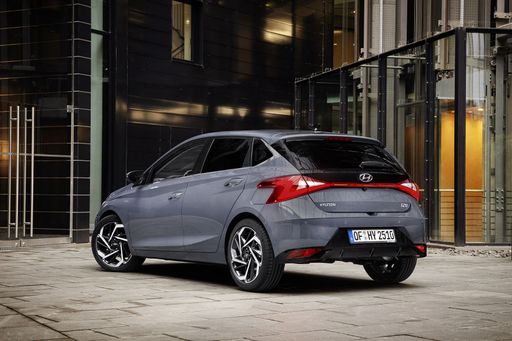
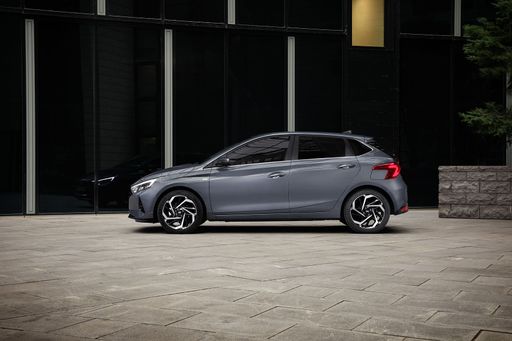
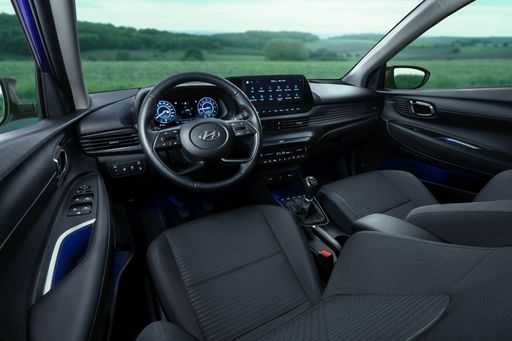


|

|
|
|
|
Costs and Consumption |
|
|---|---|
|
Price
14100 £
|
Price
18600 - 24000 £
|
|
Consumption L/100km
5 L
|
Consumption L/100km
5.70 L
|
|
Consumption kWh/100km
-
|
Consumption kWh/100km
-
|
|
Electric Range
-
|
Electric Range
-
|
|
Battery Capacity
-
|
Battery Capacity
-
|
|
co2
113 g/km
|
co2
128 - 129 g/km
|
|
Fuel tank capacity
38 L
|
Fuel tank capacity
-
|
Dimensions and Body |
|
|---|---|
|
Body Type
Hatchback
|
Body Type
Hatchback
|
|
Seats
4
|
Seats
5
|
|
Doors
5
|
Doors
-
|
|
Curb weight
1055 kg
|
Curb weight
1145 - 1170 kg
|
|
Trunk capacity
225 L
|
Trunk capacity
352 L
|
|
Length
3635 mm
|
Length
-
|
|
Width
1643 mm
|
Width
1775 mm
|
|
Height
1551 mm
|
Height
-
|
|
Max trunk capacity
870 L
|
Max trunk capacity
-
|
|
Payload
365 kg
|
Payload
455 - 465 kg
|
Engine and Performance |
|
|---|---|
|
Engine Type
Petrol MHEV
|
Engine Type
Petrol
|
|
Transmission
Manuel
|
Transmission
Manuel, Automatic
|
|
Transmission Detail
Manual Gearbox
|
Transmission Detail
Manual Gearbox, Dual-Clutch Automatic
|
|
Drive Type
Front-Wheel Drive
|
Drive Type
Front-Wheel Drive
|
|
Power HP
70 HP
|
Power HP
90 HP
|
|
Acceleration 0-100km/h
13.90 s
|
Acceleration 0-100km/h
11.5 - 12.8 s
|
|
Max Speed
164 km/h
|
Max Speed
-
|
|
Torque
92 Nm
|
Torque
172 Nm
|
|
Number of Cylinders
3
|
Number of Cylinders
3
|
|
Power kW
51 kW
|
Power kW
66 kW
|
|
Engine capacity
999 cm3
|
Engine capacity
998 cm3
|
General |
|
|---|---|
|
Model Year
2024
|
Model Year
2025
|
|
CO2 Efficiency Class
C
|
CO2 Efficiency Class
D
|
|
Brand
Fiat
|
Brand
Hyundai
|
Is the Fiat Panda offered with different drivetrains?
Available configurations include Front-Wheel Drive.
The prices and data displayed are estimates based on German list prices and may vary by country. This information is not legally binding.
